IEEE Standard for Local and metropolitan area networks—
Introduction
Notice to users
Errata
Interpretations
Patents
Participants
Historical participants
Figures
Tables
Contents
IEEE Standard for Local and metropolitan area networks—
1. Overview
1.1 Scope
1.2 VLAN aims and benefits
2. Normative references
3. Definitions
4. Abbreviations
5. Conformance
5.1 Requirements terminology
5.2 Protocol Implementation Conformance Statement (PICS)
5.3 VLAN-aware Bridge requirements
5.4 MAC-specific bridging methods
6. Support of the MAC Service in VLANs
6.1 Support of the MAC service
6.2 Preservation of the MAC service
6.3 Quality of service maintenance
6.4 Internal Sublayer Service
6.5 Support of the Internal Sublayer Service by specific MAC procedures
6.6 Enhanced Internal Sublayer Service
6.7 Support of the EISS
6.8 Protocol VLAN classification
7. Principles of network operation
7.1 Network overview
7.2 Use of VLANs
7.3 VLAN topology
7.4 Locating end stations
7.5 Ingress, forwarding, and egress rules
8. Principles of bridge operation
8.1 Bridge operation
8.2 Bridge architecture
8.3 Model of operation
8.4 Port states and the active topology
8.5 Bridge Port Transmit and Receive
8.6 The Forwarding Process
8.7 The Learning Process
8.8 The Filtering Database
8.9 MST configuration information
8.10 Spanning Tree Protocol Entity
8.11 GARP Entities
8.12 Bridge Management Entity
8.13 Addressing
9. Tagged frame format
9.1 Purpose of tagging
9.2 Representation and encoding of tag fields
9.3 Tag format
9.4 Tag Protocol Identifier (TPID) formats
9.5 Tag Protocol Identification
9.6 VLAN Tag Control Information
9.7 Embedded Routing Information Field (E-RIF)
10. Use of GMRP in VLANs
10.1 Definition of a VLAN Context
10.2 GMRP Participants and GIP Contexts
10.3 Context identification in GMRP PDUs
10.4 Default Group filtering behavior and GMRP propagation
11. VLAN topology management
11.1 Static and dynamic VLAN configuration
11.2 GARP VLAN Registration Protocol
11.3 Conformance to GVRP
11.4 Procedural model
12. Bridge management
12.1 Management functions
12.2 Managed objects
12.3 Data types
12.4 Bridge Management Entity
12.5 MAC entities
12.6 Forwarding process
12.7 Filtering Database
12.8 Bridge Protocol Entity
12.9 GARP Entities
12.10 Bridge VLAN managed objects
12.11 GMRP entities
12.12 MST configuration entities
13. The Multiple Spanning Tree Protocol (MSTP)
13.1 Protocol design requirements
13.2 Protocol support requirements
13.3 MSTP overview
13.4 Relationship of MSTP to RSTP
13.5 Modeling an MST Region as a single RSTP Bridge
13.6 STP and RSTP compatibility
13.7 MST Configuration Identification
13.8 MST Regions
13.9 Spanning Tree Priority Vectors
13.10 CIST Priority Vector calculations
13.11 MST Priority Vector calculations
13.12 Port Role assignments
13.13 Stable connectivity
13.14 Communicating Spanning Tree information
13.15 Changing Spanning Tree information
13.16 Changing Port States
13.17 Updating learned station location information
13.18 MSTP and point-to-point links
13.19 Multiple Spanning Tree state machines
13.20 Notational conventions used in state diagrams
13.21 State machine timers
13.22 MSTP performance parameters
13.23 Per-Bridge variables
13.24 Per-Port variables
13.25 State machine conditions and parameters
13.26 State machine procedures
13.27 The Port Timers state machine
13.28 Port Receive state machine
13.29 Port Protocol Migration state machine
13.30 Bridge Detection state machine
13.31 Port Transmit state machine
13.32 Port Information state machine
13.33 Port Role Selection state machine
13.34 Port Role Transitions state machine
13.35 Port State Transition state machine
13.36 Topology Change state machine
13.37 Performance
14. Use of BPDUs by MSTP
14.1 BPDU Structure
14.2 Encoding of parameter types
14.3 BPDU formats and parameters
14.4 Validation of received BPDUs
14.5 Transmission of BPDUs
14.6 Encoding and decoding of STP Configuration, RST, and MST BPDUs
Annex A (normative) PICS proforma
Annex B (informative) Shared and Independent VLAN Learning
Annex C (informative) MAC method dependent aspects of VLAN support
Annex D (informative) Background to VLANs
Annex E (informative) Interoperability considerations
Annex F (informative) Frame translation considerations
Annex G (informative) Priority
Annex H (informative) Bibliography
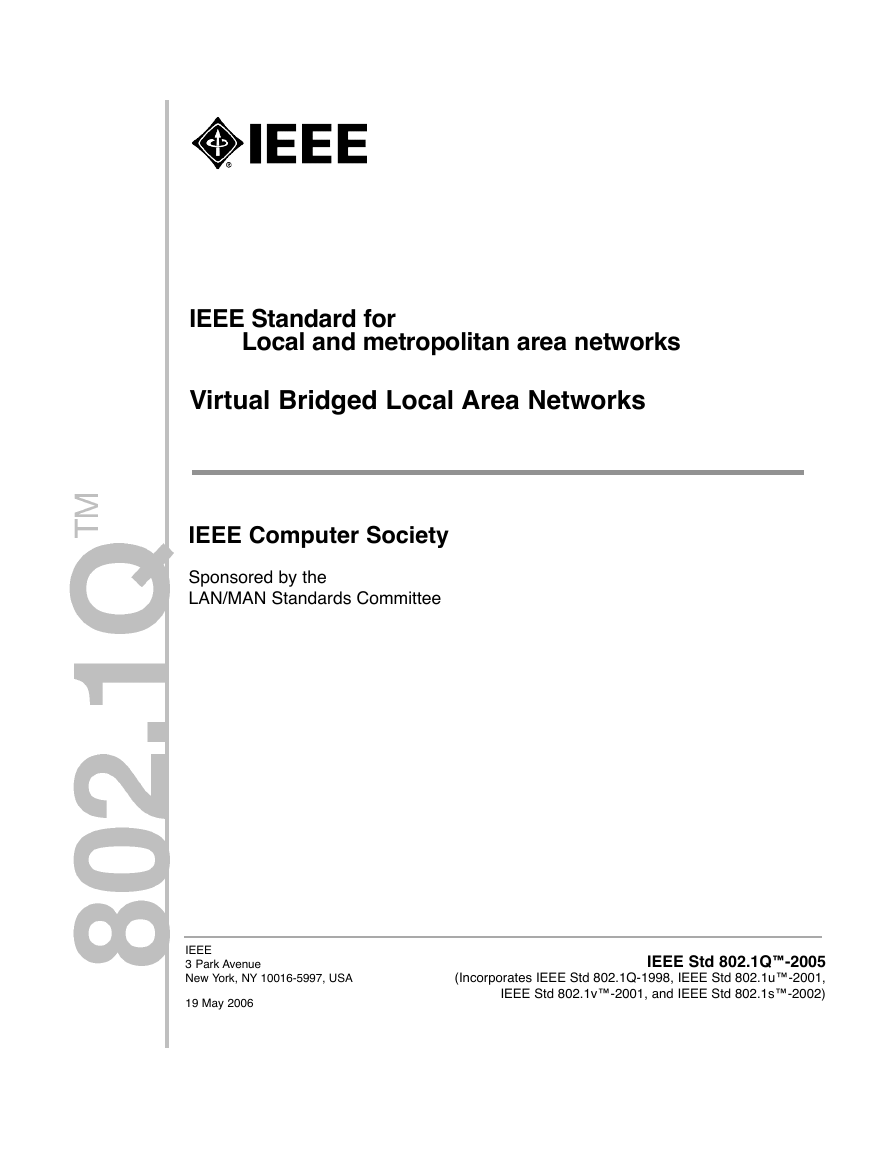

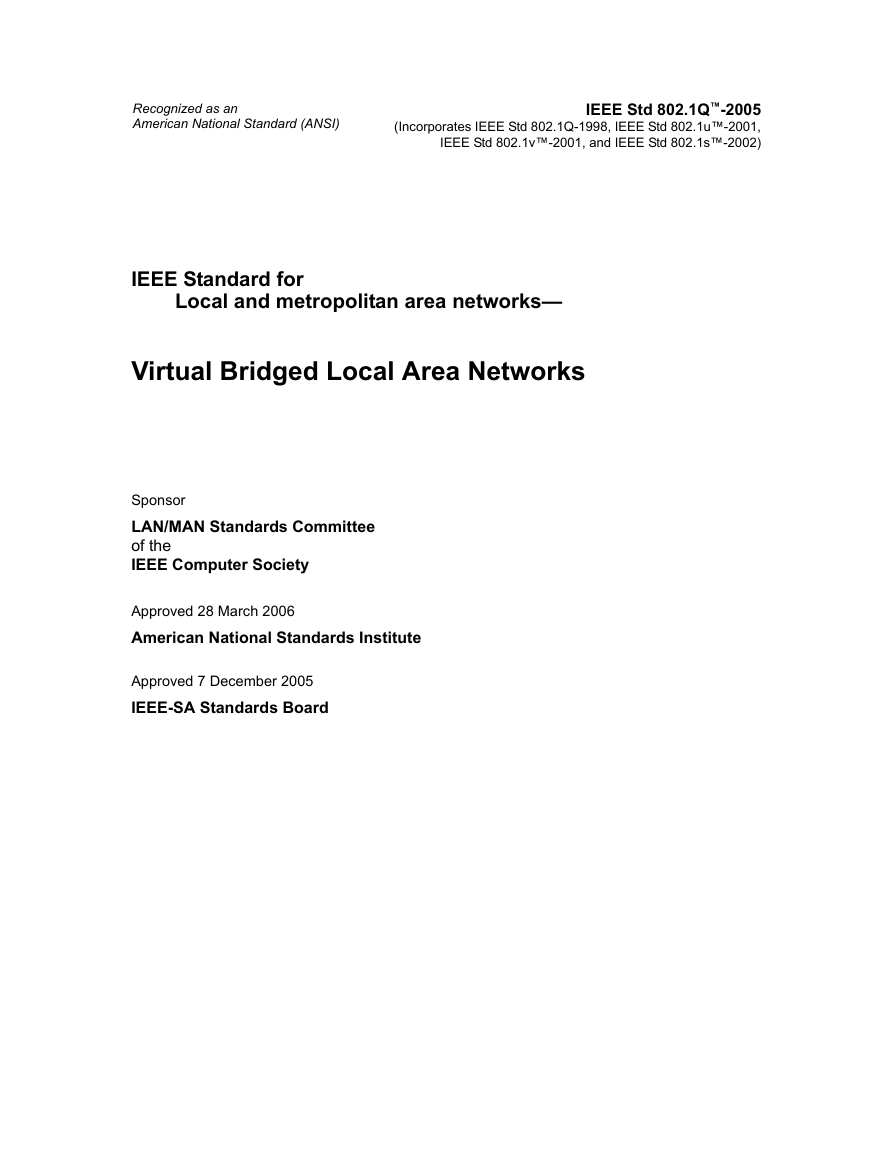
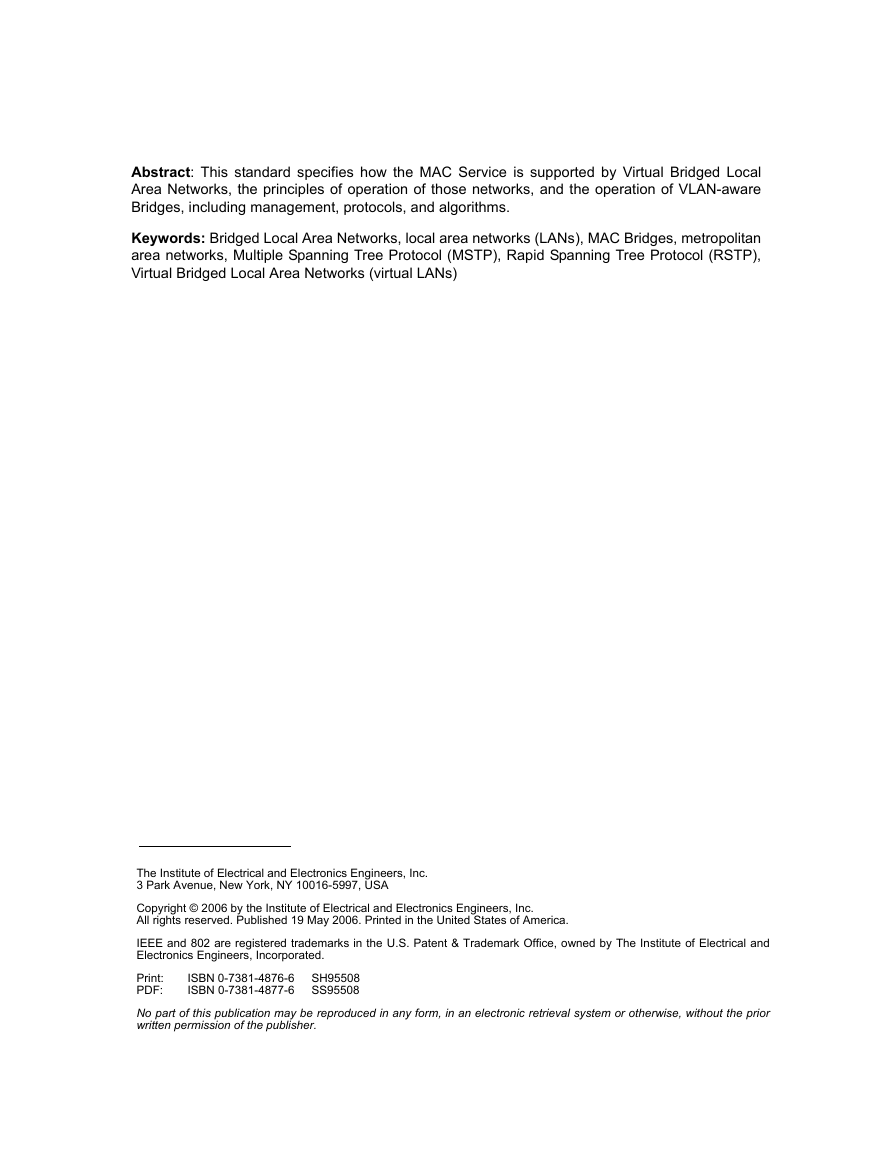
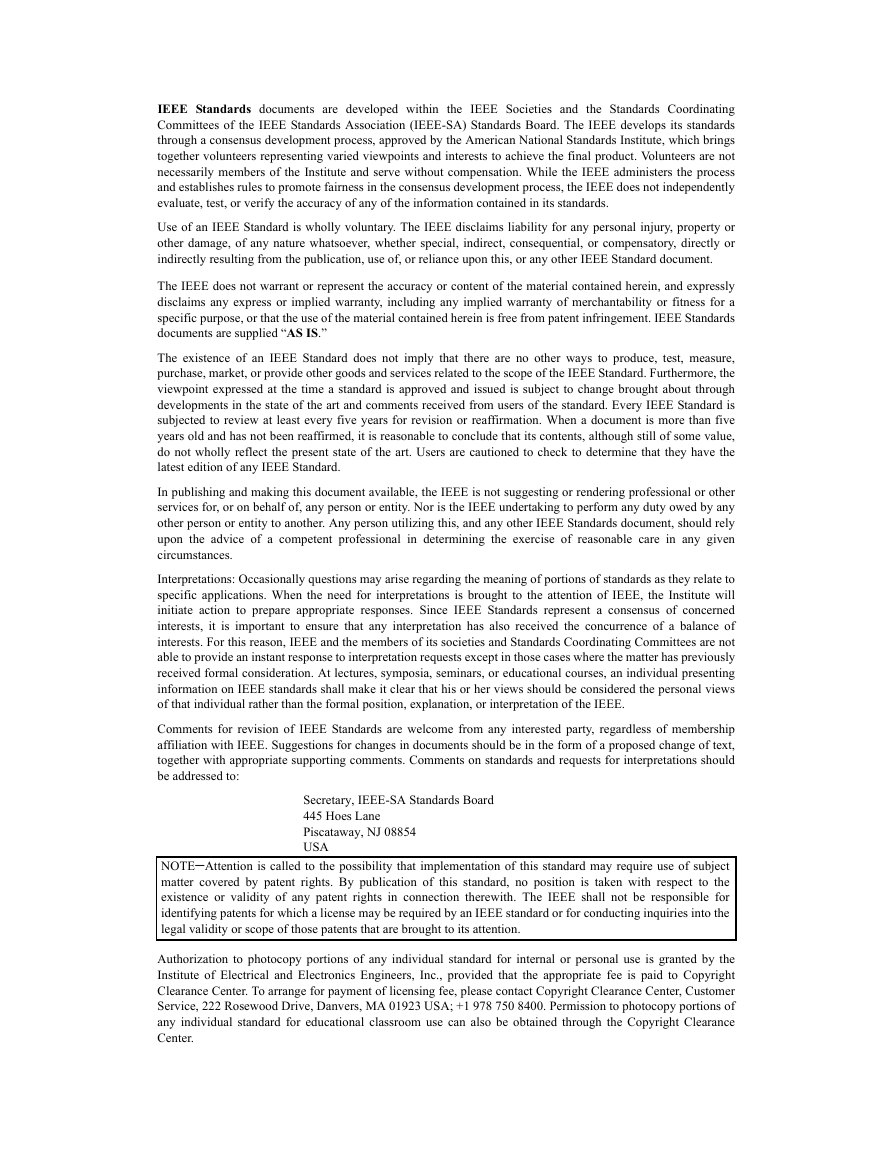
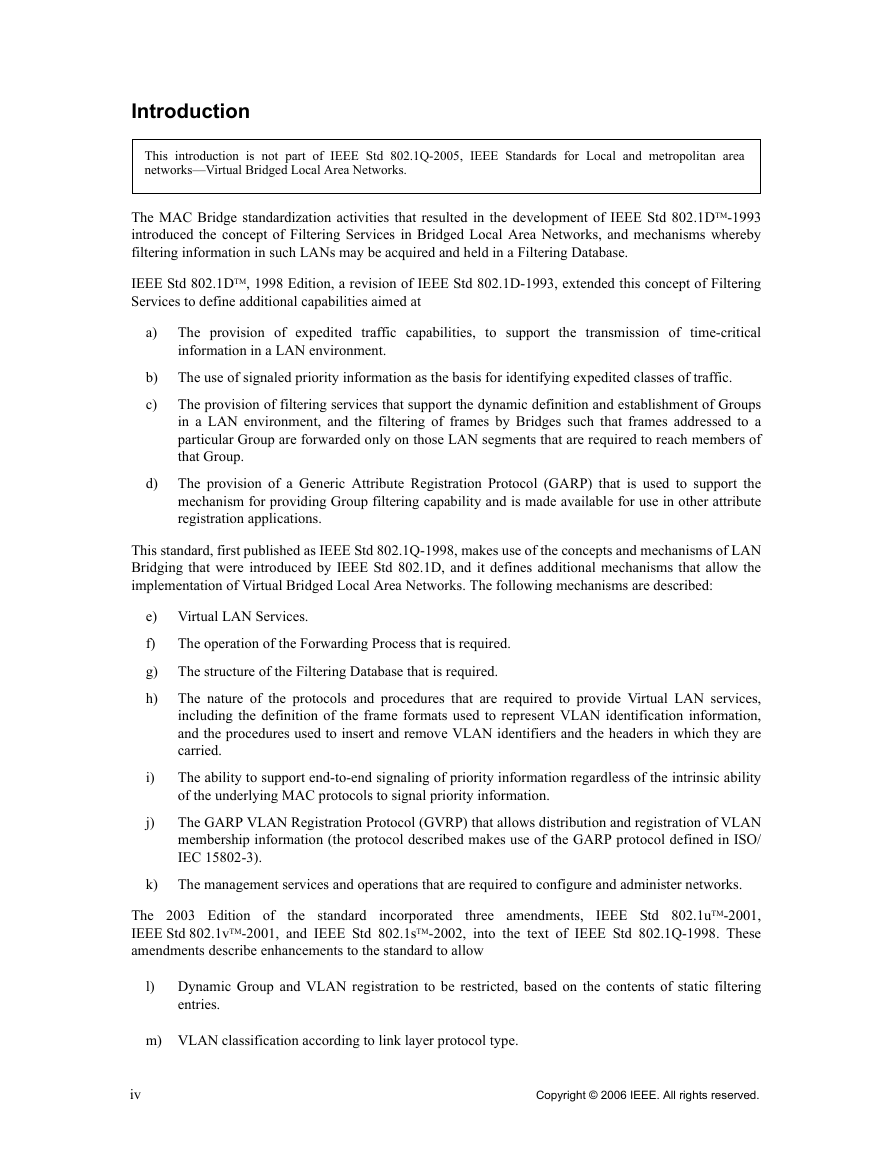
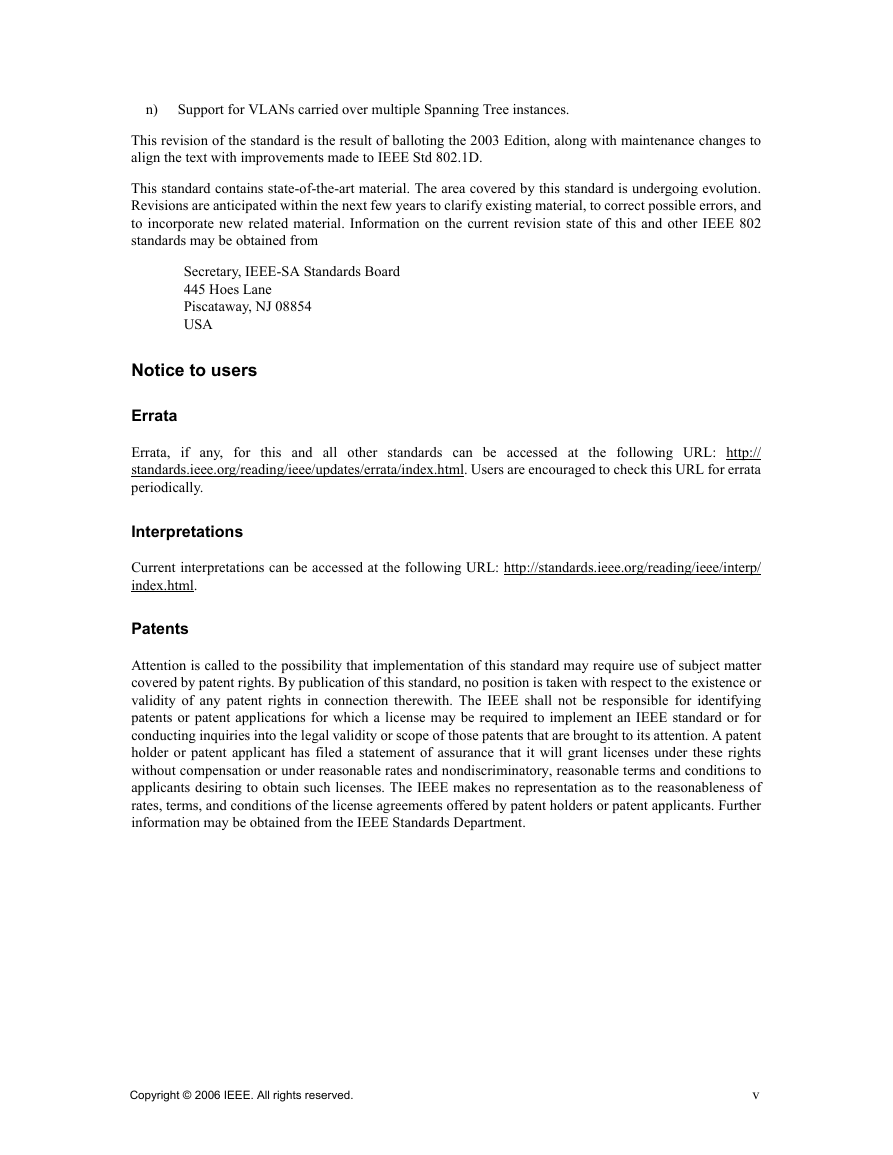
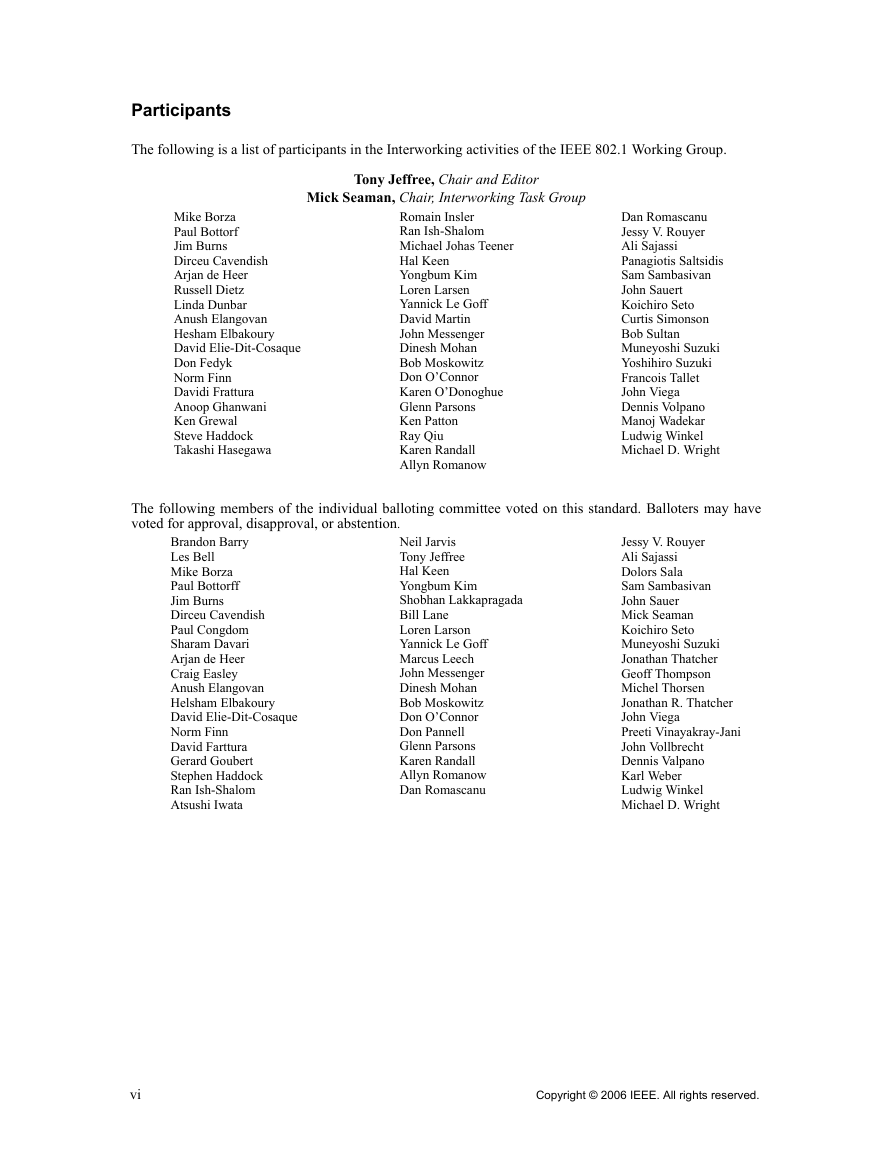








 2023年江西萍乡中考道德与法治真题及答案.doc
2023年江西萍乡中考道德与法治真题及答案.doc 2012年重庆南川中考生物真题及答案.doc
2012年重庆南川中考生物真题及答案.doc 2013年江西师范大学地理学综合及文艺理论基础考研真题.doc
2013年江西师范大学地理学综合及文艺理论基础考研真题.doc 2020年四川甘孜小升初语文真题及答案I卷.doc
2020年四川甘孜小升初语文真题及答案I卷.doc 2020年注册岩土工程师专业基础考试真题及答案.doc
2020年注册岩土工程师专业基础考试真题及答案.doc 2023-2024学年福建省厦门市九年级上学期数学月考试题及答案.doc
2023-2024学年福建省厦门市九年级上学期数学月考试题及答案.doc 2021-2022学年辽宁省沈阳市大东区九年级上学期语文期末试题及答案.doc
2021-2022学年辽宁省沈阳市大东区九年级上学期语文期末试题及答案.doc 2022-2023学年北京东城区初三第一学期物理期末试卷及答案.doc
2022-2023学年北京东城区初三第一学期物理期末试卷及答案.doc 2018上半年江西教师资格初中地理学科知识与教学能力真题及答案.doc
2018上半年江西教师资格初中地理学科知识与教学能力真题及答案.doc 2012年河北国家公务员申论考试真题及答案-省级.doc
2012年河北国家公务员申论考试真题及答案-省级.doc 2020-2021学年江苏省扬州市江都区邵樊片九年级上学期数学第一次质量检测试题及答案.doc
2020-2021学年江苏省扬州市江都区邵樊片九年级上学期数学第一次质量检测试题及答案.doc 2022下半年黑龙江教师资格证中学综合素质真题及答案.doc
2022下半年黑龙江教师资格证中学综合素质真题及答案.doc